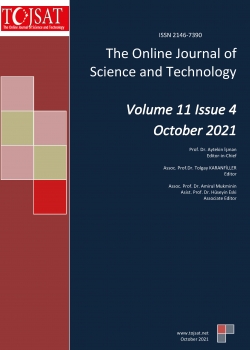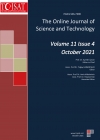TOJSAT - Volume 11 - Issue 4 - October 2021
 FINANCIAL RESOURCES OF STATE UNIVERSITIES IN TURKEY
FINANCIAL RESOURCES OF STATE UNIVERSITIES IN TURKEY Hasan TOSUN
Abstract:
In Turkey, the financial resource of state universities is mainly depending to the national centralized budget. The amount of financial resources to a university is determined after end of a series negotiations with the central government for each year. The total budget of a state university is classified into five main headings: (1) personnel expenses, (2) Social Security Premium expenses, (3) purchase of goods and services, (4) current transfers and (5) capital investment. There are different classifications related to the categorization of universities in the world. One of them is college age. In other words, the foundation year is considered in the classification. In Turkey, 103 state universities were established between 1933 and 2011 during the Republic period. These universities are divided into six separate categories by the author according to their year of establishment. In the study the financial data belonging to the period 2010-2014 was utilized. According to these data, the state universities totally received TL 9.33 to 15.19 billion (US$ 5.94 to 7.91 billion) per year from the central budget in the working years. The paper summarizes the final data of a study performed on the share of the state budget of the state universities in Turkey and evaluates the distribution of state resources according to the university categories.
 GENDER AND POLITICAL EMPOWERMENT: THE ROLE OF WOMEN IN LEBANON'S ONGOING UPRISING
GENDER AND POLITICAL EMPOWERMENT: THE ROLE OF WOMEN IN LEBANON'S ONGOING UPRISING Jasmin Lilian DIAB
 WOMEN BEHIND THE PENS: A COMPARATIVE ANALYSIS OF TURKISH FEMALE AUTHORS FROM REFORM PERIOD TO MODERNISM
WOMEN BEHIND THE PENS: A COMPARATIVE ANALYSIS OF TURKISH FEMALE AUTHORS FROM REFORM PERIOD TO MODERNISM Senem ĂśSTĂśN KAYA
Abstract:
In history, men dominated the political and professional realms while women were limited in domestic spheres and were accepted as the subordinate, “the second sex” or “other” (De Beauvoir, 1968, p. xvi) biologically and naturally. With the French Revolution (1789), women’s suffrage movements emerged all over Europe and due to the wars and the Industrial Revolution in the 19th century onwards, gender shifts occurred because women were involved in the public spheres to substitute men. Under the influences of the western feminism, in the Ottoman Empire, feminist movements began with the Tanzimat Reforms (ZihnioÄźlu, 2013) in the second half of the 19th century and novelties of the century provided the age of “modernisation” in the lives of the Ottoman women. With the Second Constitutional Monarchy (1908-1922), Turkish female authors appeared in the literary canon with their own names and reflected the social, cultural and political changes in the Ottoman society with feministic views. Through modern periods, there are noteworthy female authors, whose works are the documents of the Turkish Republican Era. Therefore, this study aims at examining the developments of female writings from the Tanzimat Reform Era to modern periods. The study involves three main parts. The first part focuses on the historical analysis of changes in Turkish literature. In the second part, certain Turkish female authors and their works are analysed to exemplify the contextual and discourse levels. Finally, the study concludes that the historical and social developments, which began during the 19th century, constitute the modern period feministic works in Turkish literature. Within this scope, the novels and short stories of Emine Semiye, Fatma Aliye, Nezihe Muhiddin, Halide Edip Adıvar and Leyla Erbil were studied. Based on the findings, it was concluded that feministic views and female writings have evolved from the Tanzimat Period to modern ages due to political, social and historical changes in Turkish culture.


